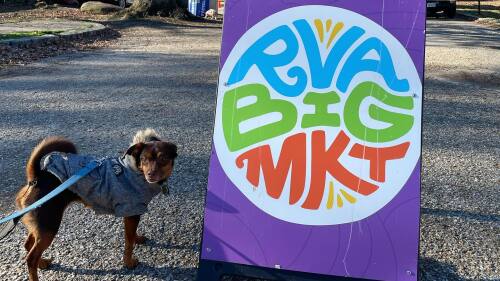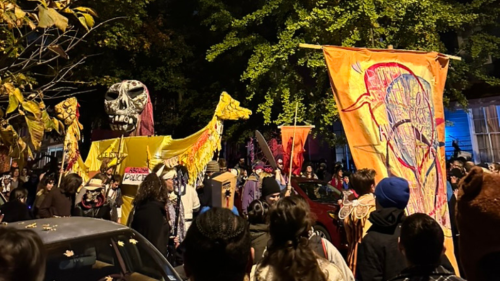You don’t need a time machine to see what RVA was like a century ago.
We’ve spent the last few (snow) days scouring archives, forums, and newspaper clippings to give you a glimpse into the past. And just as always, Richmond never stops surprising us.
Miller & Rhoads Dry Goods
If you look closely at the postcard, you’ll see multiple billboard ads for this retailer. And if you were around in 1925, it was almost impossible to miss as its flagship store covered an entire city block. Its iconic build is thanks to historic architects Starrett and Van Vleck who designed other department stores like Sak’s Fifth Avenue in New York City.
Boulevard Bridge
The new year started with a big bang as this iconic bridge was opened on Jan. 1, 1925. Local reports from that time show it costed $275,000 to build — or roughly $5+ million in today’s economy, according to the US Bureau of Labor Statistics. Though some were hesitant about using the bridge initially, within four days of opening, traffic jams already began occurring on it. One man tasked with counting the cars that used the bridge that day said he lost count after 5,000.
Richmond Public Library
A century ago, our library was struggling to find funding and a permanent home. In fact, in 1925 it was operating out of a YWCA. Enter: Sallie May Dooley, a philanthropist who was married to former House of Delegates member James H. Dooley. When she died on Sept. 5, 1925, she donated $500,000 to the city so that the first-ever local public library could be built in honor of James. Five years later, the Dooley Library was opened, where the main branch still stands today.
Church Hill Tunnel
This heartbreaking tale is a stark reminder of the difficulties past communities faced while working towards a modern world. On Oct. 2, 1925, a train passed over the tunnel, causing it to collapse and take the lives of numerous workers. It was one of the longest tunnels in the US at that time, but historians now know that the soft clay and limestone it was built on was not structurally strong enough to support that kind of travel.
WRVA
On Nov. 2, 1925, WRVA was officially dedicated by a group of businessmen mostly backed by tobacco companies. This AM station ran many shows, notably without commercials, but “The Corn Cob Pipe Club” quickly became the most popular. It would eventually grow a following outside of Virginia, with 900+ clubs sprouting across the nation.
















